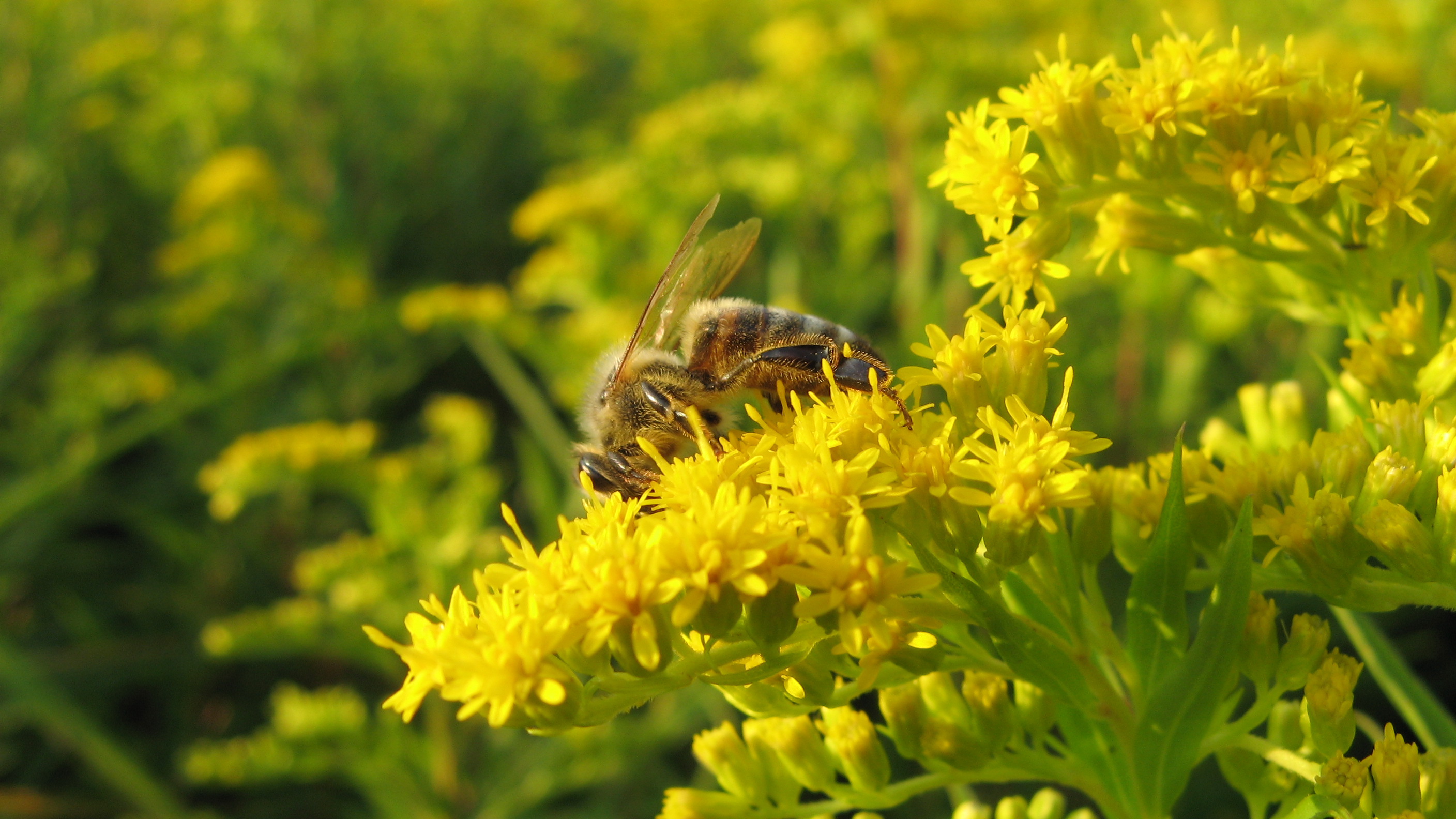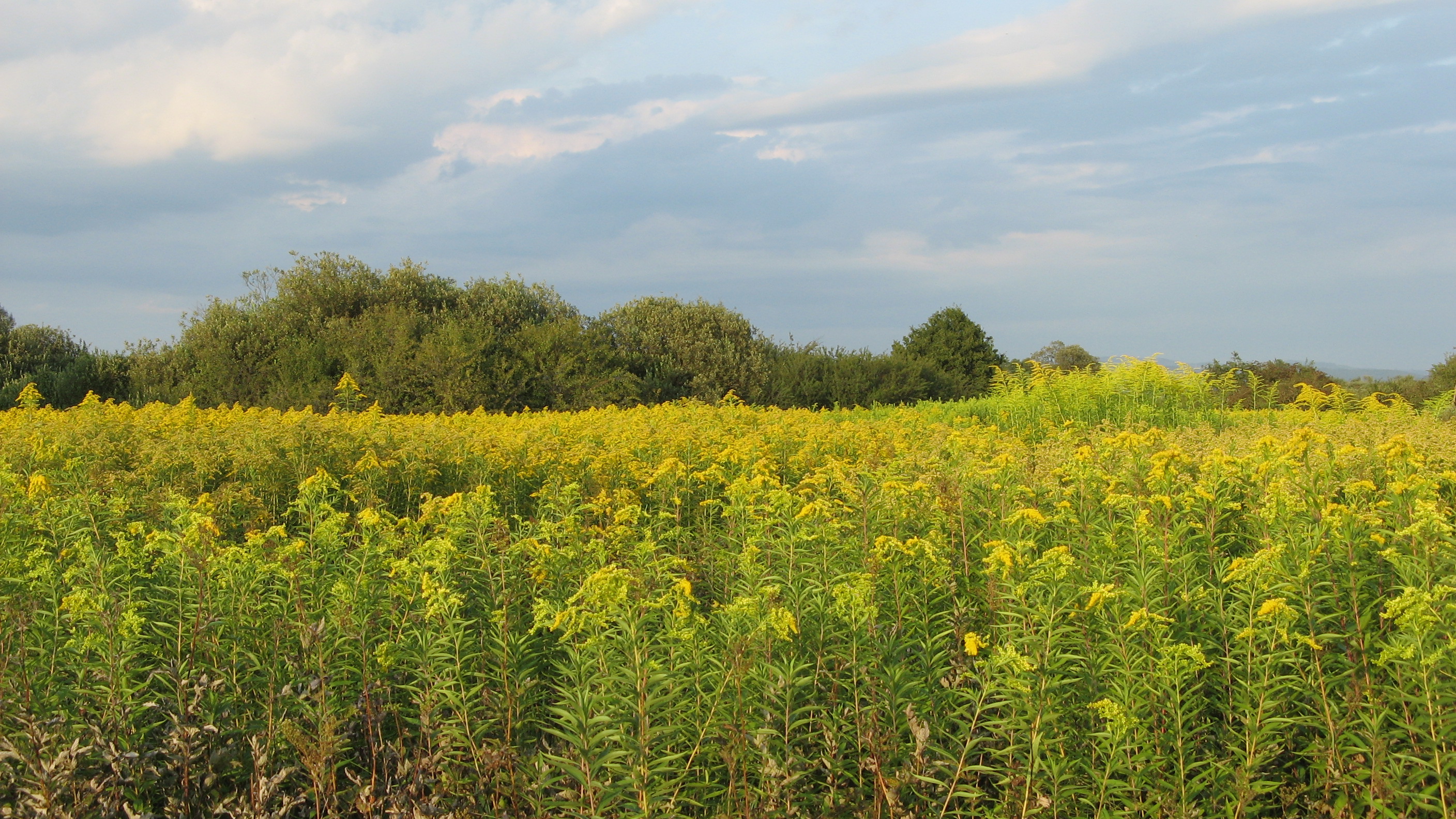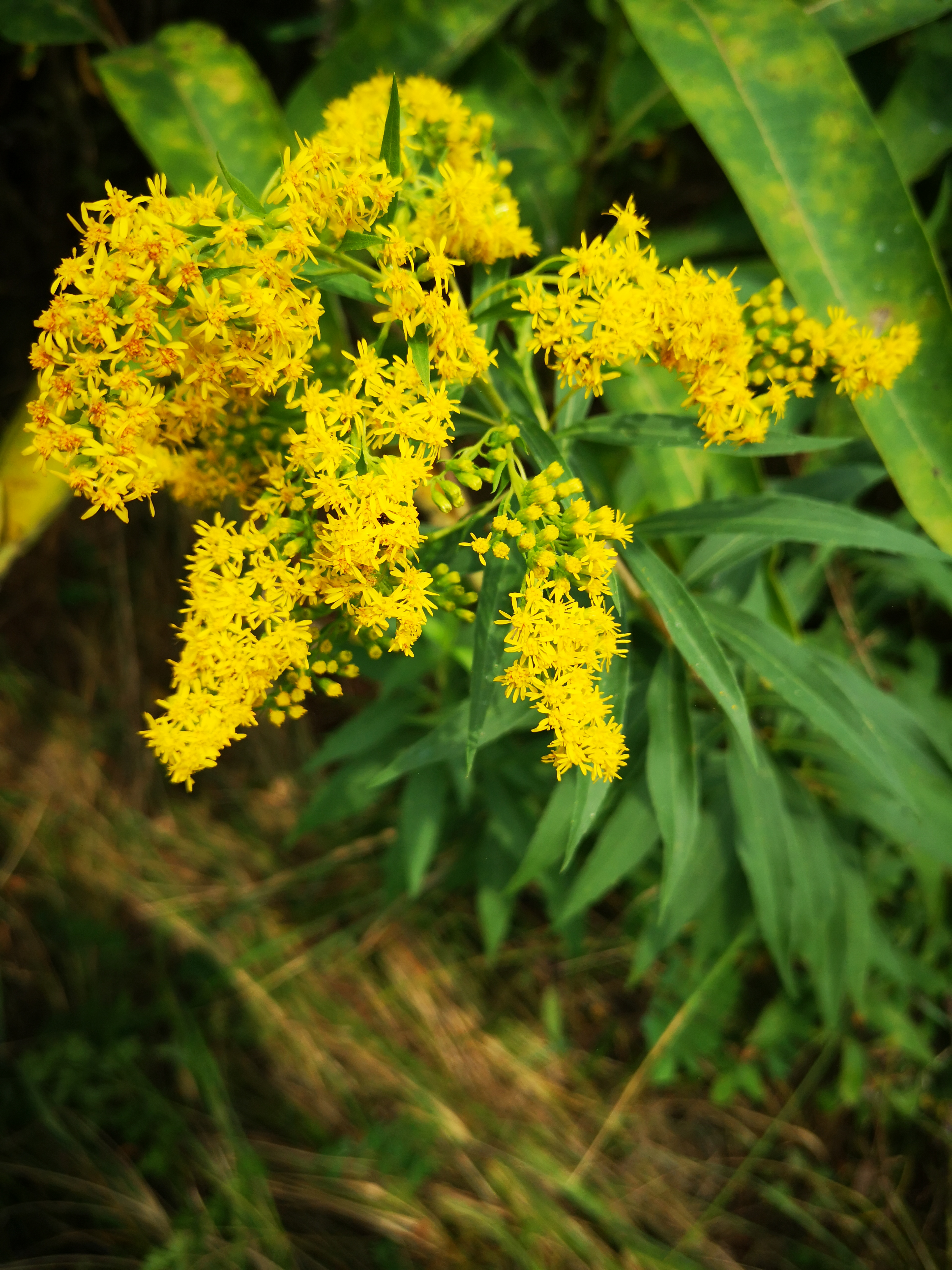Sava TIES - GET TO KNOW THE INVASIVE ALIEN PLANTS - Canadian and Giant Goldenrod
21-11-2019
If you take a stroll through the Ljubljana Marsh at the end of summer, you cannot miss the tall plant with bright yellow inflorescences overgrowing abandoned meadows and fields as well as unmown areas by the roads and ditches. It is Goldenrod! Not the indigenous European Goldenrod (Solidago virgaurea) that grows in bright forests, on clear-cuts and forest edges across Slovenia though. They are foreign Canadian (Solidago canadensis) and Giant (Solidago gigantea) Goldenrod, two of the most invasive plant species in the area of the Ljubljana Marsh and across all of Central Europe. They are also causing trouble in other parts of Europe, in most parts of Asia, in Australia and in New Zealand. Both species are indigenous to North America. Canadian Goldenrod was one of the first decorative plants that were brought from North America to Europe. In Britain, it has been known since the 17th century and was spread across most of Europe in the 19th century. It used to be planted in botanical gardens, parks and gardens from where it has spread into nature.

Photo: Goldenrod (B. Vidmar)
Our ancestors used European Goldenrod as medicine for alleviating problems with the urinary system and healing wounds. The two foreign Goldenrod species contain the same active substances, but unfortunately they have a destructive effect on biodiversity and habitats. They produce dense stands that prevent the indigenous plants from growing which in turn makes the habitats inappropriate for many animal species. It has been established that in the areas overgrown by Goldenrod, there are fewer ants, which has a negative effect on butterflies, which are dependent on them. Canadian and Giant Goldenrod spread quickly, with a single plant producing thousands of seeds that are carried by wind or spread by vegetative propagation with underground stems. They grow particularly quickly on degraded areas and abandoned farmlands that the indigenous species reach more slowly. Poorly cleaned machinery also often brings their seeds to those areas or the seeds and roots are already present in the soil that is used for filling the surface. Their special characteristic is that their roots produce substances that slow down the growth of other plants and decrease their successful development. This decreases the biodiversity of other plants and organisms that are dependent on them. Because of the substances they produce, the soil is also less suitable for farming.


Photo: Area overgrown with Goldenrod (B. Vidmar) Photo: Area overgrown with Goldenrod (B. Vidmar)
Regular mowing prevents the Goldenrod from spreading to the meadows. However, decreasing the frequency of mowing for the purpose of preserving the species that are threatened by early mowing or mowing in certain seasons can cause problems.
Canadian and Giant Goldenrod bloom from July to September when most of the indigenous plants already wither and beekeepers love them for it. Where they grow, they are important food for bees, allowing bee colonies to preserve their strength and enabling strong development of winter bees.

Photo: Goldenrod (I. Sucic)
News in national languages:
Croatia - Green Ring or Lonjsko Polje Nature Park Public Institution
Slovenia - Public Institution Ljubljansko barje Nature Park
Bosnia and Herzegovina - Center for Environment or Public Company National Park "Una"
Serbia - Institute for Nature Conservation of Vojvodina Province or Nature Conservation Movement Sremska Mitrovica or Public Enterprise „Vojvodinašume“
Germany - EuroNatur
